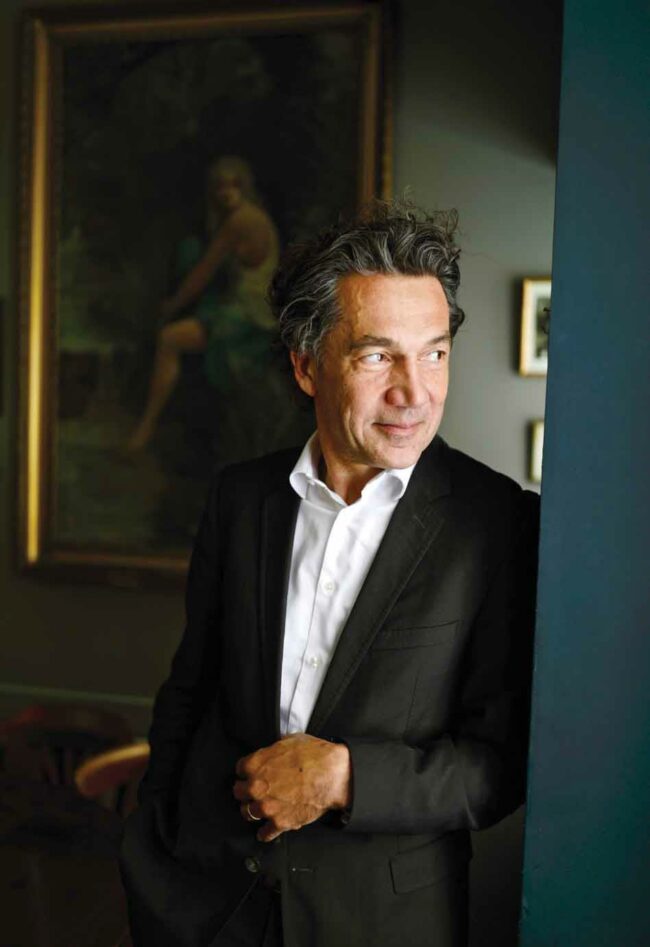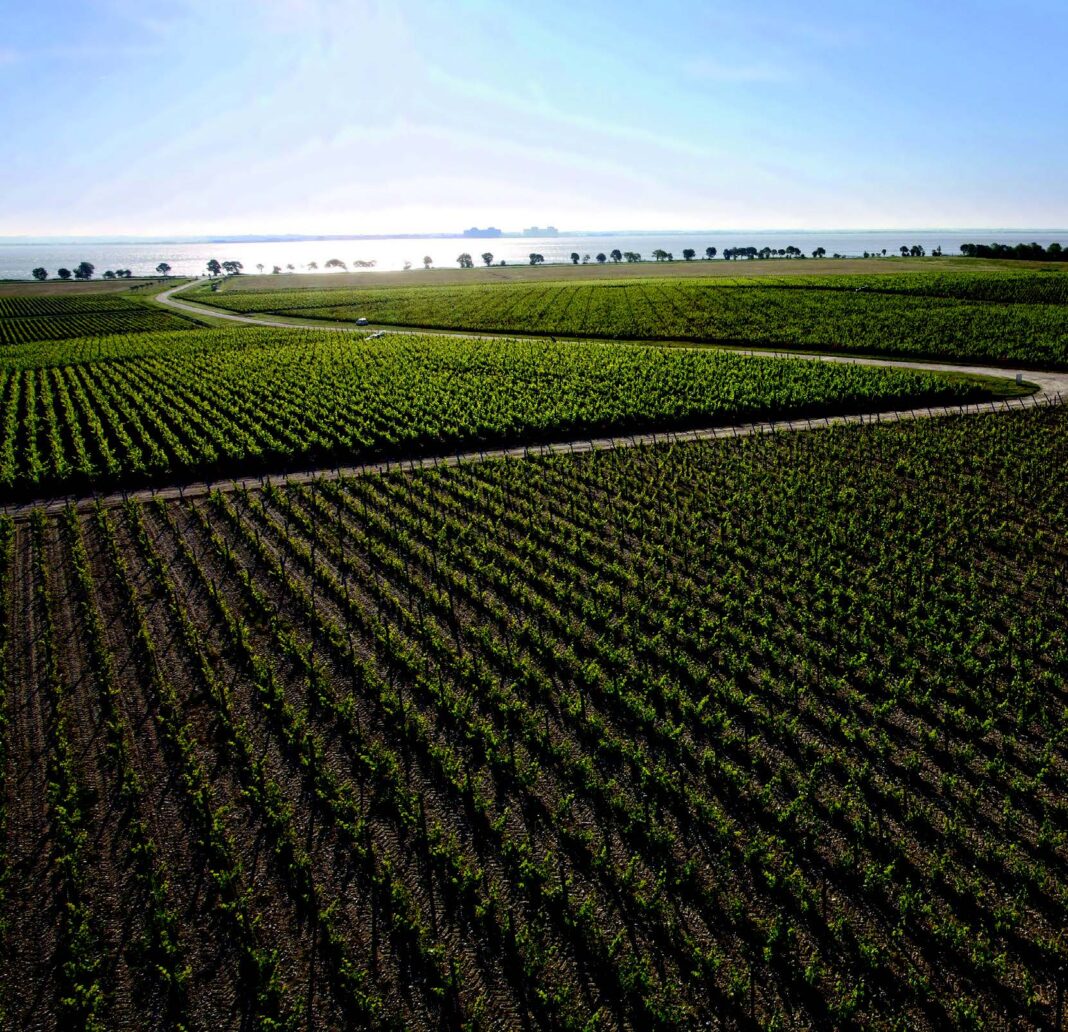If you’re going to win in the world’s fine wine league, you’ve got to have a strong case. Eleven good reasons why the Médoc isn’t an outsider, it’s a French champion.
- THE PLANTING FURY. Professor René Pijassou, in his impressive doctoral thesis on the Médoc wine-growing region, speaks of a “late vocation”. The wealthy inhabitants of Burdigala (the Roman name for the city of Bordeaux) appreciated wines from the Narbonnaise and Campania regions, giving rise to a prosperous wine trade. Later, in the Middle Ages, it was mainly against competition from wines from the “Haut-Pays” (arriving by barge from Cahors or Fronton) that this same trade fought with taxes and “privileges”, selling a mass of Graves or Palus wines to English merchants. It wasn’t until the beginning of the 18th century that the Médoc appeared, almost suddenly, in the imagination of wine-lovers at the time as French new clarets. The London Gazette described these wines as “bright, deep, fresh and neat”, words that still characterise the best wines from the peninsula today. The “planting fury” that swept through the Haut-Médoc (between Margaux and Saint-Estèphe) was severely judged by the authorities of the time, who were concerned about abandoning staple cereal crops in favour of vines. The Lafite vineyard, at the heart of a seigneury that covered around a thousand hectares at the end of the 17th century, began to be planted after 1670, and the estate (which also included Clos de Mouton and Canet) exceeded the 300 hectares planted eighty years later. The inextinguishable growth was comparable in all areas of the Sud-Médoc, and this late fame made it the first modern vineyard in history. It also gave it another challenge: to remain a modern vineyard.
- BIG IS BETTER Unlike most French vineyards, the Médoc was established relatively recently and, what’s more, in a fairly inhospitable and therefore sparsely populated landscape. Its vast seigneuries, although dismantled during the Revolution, were transformed into respectable-sized estates. The average surface area of a wine classified in 1855 is now much larger than that of a Saint-Émilion classified wine, for example, let alone an estate on the Côte de Nuits or in Napa Valley. Even when compared with the major Champagne houses, which produce more under their own brand names than the Médoc Grands Crus, it is clear that the balance of the vineyards is tipped in favour of Bordeaux. The significant size of the Médoc’s big names obviously has consequences for the way the wines are conceived. Always the result of a blend of the best terroirs and the oldest vines, a great Médoc wine always has its own distinctive style that sets it apart from its neighbours. Every attentive observer and taster has experienced this over the last four centuries. This permanence of personality (even if each cru has gone through more or less favourable phases in its history) is a unique asset in the world of wine.
- THE RETURN OF THE SAME Domenger, manager of Château Latour at the end of the eighteenth century, wrote to the Marquis de Beaumont, one of the co-owners of the vineyard: “The Médoc is a privileged canton, as spring frosts never do any harm along our coast”. In the 19th century, the Médoc was praised for its ability to produce good harvests on a regular basis, often thanks to a hot, dry summer and early harvests around mid-September. At the time, it was estimated that eight out of ten years could be considered good or very good, which was well above the average for other regions. Today, we seem to have returned to this standard, despite the climatic upheaval we are experiencing.
- BEAUTIFUL GRAVES Even if the châteaux are proud to point out their plots of vines planted on hilltops, the Médoc is flat, once again going against the idea that the best vineyards are planted on well-exposed slopes. The Médoc’s strength lies first and foremost in its geology, which stems directly from its geographical location on the banks of an estuary, i.e. a subsoil of marl topped by alluvial deposits brought down by the various upheavals of the Massif Central and the Pyrenees during their long metamorphic history. This history has a symbol that sums it up almost entirely: gravel. Pebbles of “elongated and slightly flattened shape, not spherical”, says the meticulous Pijassou, made of hard rock “insensitive to the phenomena of dissolution, corrosion or alteration”. Still here to stay, they stretch out in sometimes spectacular sheets. Sometimes small, sometimes imposing, particularly in certain areas of Pauillac and Saint-Estèphe, these stones play a multitude of roles, from drainage to light reflection, including helping the roots of the vines to grow deep down, and even acting as the vineyard’s trademark image, which has been reproduced and recounted for centuries.
- THE CABERNET EMPIRE At the beginning of the 19th century, the most important Medoc cru managers were talking about Malbec and Cabernet, and certainly Sauvignon. Merlot was still unknown here. There were still too many white grape varieties (which gave the colour to the clarets of yesteryear) for the new tastes of the time. While Malbec curiously never reappeared after the phylloxera crisis – although it is now said to play an interesting complementary role in certain Médoc terroirs – Cabernet-Sauvignon has established itself as the essential grape variety of the Médoc. Even though it has had an international career, making its mark in Napa as well as in the Tuscan Maremma, giving its identity to prestigious vintages in Chile, Central Europe and Languedoc, Cabernet Sauvignon has been able to retain its unique personality, where depth still dominates over massiveness. Its aromatic freshness has moved away from vegetal tastes (between aromas of pepper and the “coppery” notes of many Médocs from the 1970s), without joining the black fruit or chocolate of so many contemporary red wines. In short, a faithful and expressive interpreter of the distinction of the crus and terroirs.
- UNDER OAK Barrels were invented by the region’s Gallic tribes, according to Bernard Ginestet of Margaux. A historic companion to Bordeaux wine, oak barrels have always been used by Médoc châteaux, initially as containers and means of transport, before being conceived as a specific method of ageing. The systematisation of new barrels from the 1980s onwards, the marked notes of toast or vanilla, in short the caricatures that developed with continued critical and commercial success in the decades that followed, eventually turned against their users and created an “anti-wood” fad. This led, in part, to the famous Bordeaux bashing. If we are willing to put fashions and anti-fashions behind us, we can simply point out that barrel ageing, measured out with finesse and skill, is remarkably well-suited to the organoleptic characteristics of the Médoc grape varieties and wines.
- A SYSTEM At the end of his life, in 1815, the wine broker Lawton published a classification of Médoc wines. Beyond the hierarchy, which is close to that of 1855, it is the modernity of his remarks on the appreciation of Médoc wines that is most striking: “Each owner makes a wine that differs more or less in quality. Experience has taught us how to classify them. Every year, among those we put in the same line, we find that some are more successful than others”. Here Lawton was establishing his role as broker. He also created the role of wine critic. From the outset, the division of tasks was the rule in the Médoc. The régisseurs organised and managed the technical teams, including the cellar master, at Châteaux owned by wealthy aristocrats, and later by grand bourgeois or wine merchants, both French and foreign, who rarely – if ever – lived on site, but followed the progress of the business with interest and sometimes ideas. The brokers tasted and evaluated the wines they offered to the merchants of the “place de Bordeaux”. The latter marketed and distributed them via other merchants in various international markets. For more than two centuries, the mechanism has been the same, with the notable difference that the brokers no longer evaluate the wines, this task being carried out by different critics or tasters. Despite numerous crises and many more critics, it works.
- BUSINESS AS USUAL In the 1800s, the steward of Latour said that the estate was “a gold mine”. Today, his distant successor cannot contradict him. The Bordeaux wine trade today is a paradox. We can criticise the recurrent inability of its market system to market the “petits bordeaux”, i.e. roughly nine-tenths of the wines produced in the Gironde. As for the Grands Crus, despite numerous attempts, no better solution has been found.
- EN GARDE If immediacy seems to have become one of the supreme values of our time, the ability to be part of the long term remains a valued character. Like all great wines, those of the Médoc have a brilliant and complex capacity for ageing. What’s different about Bordeaux is that the crus and the wine merchants understood this quality very early on and turned it into an argument for uniqueness. The indispensable Féret has been listing the quality of vintages since 1798. And the recent magnificent Almanach du Château Lafite records the weather and harvest conditions for every vintage since Baron James de Rothschild acquired Lafite in 1868.
- WHAT A VINTAGE For all wines, each new harvest brings with it its share of climatic, agronomic and oenological specificities that will necessarily define an organoleptic profile that wine-lovers and professionals alike will keep more or less in mind throughout the years that follow. Only in Bordeaux, and in the Médoc in particular, does the nature of the vintage have such an impact on the identity of the wines: their style, their reputation and their price. This increasingly absurd distinction between “great” and “small” vintages is open to debate. The fact is, we haven’t yet found a better way to talk about a bottle for a long time.
- PYRAMIDE Thomas Jefferson, then United States ambassador to France, made a trip to Bordeaux that has become famous for the extremely precise and fascinating account he gave of it. He wrote: “In the red wine category, there are four first-rate crus. Château Margaux, La Tour de Ségur (Château Latour), Haut-Brion and Château de la Fite (Lafite)”. This commercial and qualitative hierarchy is astonishing when you consider that he is talking about vineyards that took their contemporary form a few decades earlier. It’s even more impressive when you consider its permanence over the centuries that followed, disturbed only by the later emergence of Mouton. Even if he forgets Pichon and amusingly calls Léoville “Lionville”, he goes on to mention many of the crus that would be classified as second or third in the following century. This hierarchy, established so early in the history of the vineyards and maintained century after century, is unique in the history of wine. However mythical they may be in the eyes of connoisseurs, the Californian pioneers of the 1950s, Beaulieu or Montelena twenty years later, no longer shine in the hierarchy of Napa wines today. Most Champagne houses have had their moments of glory, but also of despair. The climats ensure that Burgundy’s reputation will live on far longer than the names of those who serve them. And in Saint-Émilion, the classification system tries, with varying degrees of success, to reshuffle the deck every ten years. Only the Médoc crus have maintained their reputation almost unchanged since their creation.


























